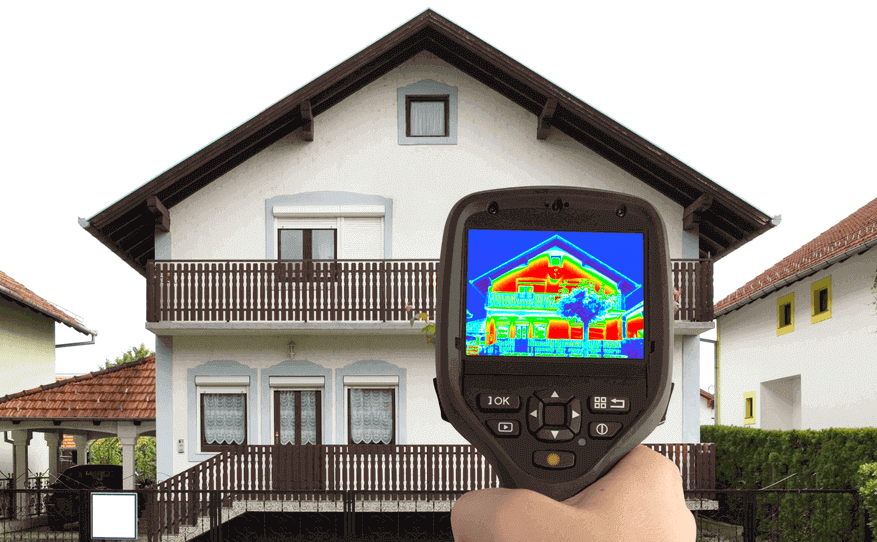If you’re in the middle of a new build, then you’re probably not too fussed about getting a sustainability and energy efficiency rating for your home. But it may just be one of the most important jobs on your to-do list, especially with most states and territories having a required minimum for safety, health and sustainability in home designs.
NatHERS is one of the most common rating systems used in Australia for home energy efficiency, but just what is it exactly? And how do you obtain a NatHERS rating?
On this page:
- What is NatHERS?
- What is a NatHERS certificate and when is a NatHERS certificate required?
- What is a NatHERS Assessor?
- Is a NatHERS rating compulsory?
- What is a good NatHERS rating?
- What is the difference between BASIX and NatHERS?
- How much does a NatHERS star rating and certificate cost?
- How to make your home more energy efficient
What is NatHERS?
Introduced in 1993, the Nationwide House Energy Rating Scheme (NatHERS) is a 10-point star ratings system used to measure the energy efficiency of a home. This scheme was implemented by the Australian Government to help uphold design standards and make homes more energy efficient. In its current state, the NatHERS scheme supports the residential energy efficiency standards outlined in The National Construction Code 2022.
The NatHERS rating of a home will rely on a number of factors including the building materials and methods used, size of rooms, the layout and orientation of the dwelling and whether the home is in a position to utilise shading or breezes. The NatHERS rating has been updated to include information regarding the greenhouse gas emissions of a property, the costs and energy used by major appliances and the impact of solar and batteries. This update now sees the rating broken into two parts: a NatHERS rating, which measures the thermal star rating of a home out of 10, and the Whole of House rating, which measures the energy usage of the home appliances on a scale out of 100.
What is a NatHERS certificate and when is a NatHERS certificate required?
A NatHERS certificate shows key information regarding a property and the scope of it’s star rating. This includes both the thermal and Whole of House rating, as well as energy use by major installed appliances, greenhouse gas emissions and any details on solar and batteries where applicable.
A NatHERS certificate is typically used on all multi-dwelling new developments, such as apartment buildings. Although it’s not compulsory for single dwellings, it’s one of the most common certifications used in Australia to show that a new development or renovation meets construction code energy efficiency requirements. A NatHERS certificate can be provided by an accredited NatHERS assessor.
Advertisement
What is a NatHERS assessor?
A NatHERS assessor is an organisation that is trained, certified and accredited to perform the NatHERS thermal assessment software and award an efficiency star rating under the national Assessor Accredited Organisation (AAO). There are three organisations which train companies under the AAO; the Australian Building Sustainability Organisation (ABSA), Design Matters National and House Energy Rates Association (HERA).
To find a NatHERS assessor, you or your builder will need to contact one of the previously mentioned organisations to find one in your local area.
Is a NatHERS rating compulsory?
While NatHERS itself isn’t a compulsory rating, it can help to measure the minimum necessary requirements around the safety, health and sustainability of new building designs and constructions under The National Construction Code.
Some states and territories may have other certification systems to determine these rating features, but NatHERS is the most common system for an accreditation in health, safety and sustainability in Australia. According to the government’s NatHERS website, about 90% of new home designs in Australia are assessed using NatHERS.
Compare cheap electricity plans
Here are some of the cheapest published deals from the retailers on our database that include a link to the retailer’s website for further details. These are products from referral partners†. These costs are based on the Ausgrid network in Sydney but prices may vary depending on your circumstances. This comparison assumes general energy usage of 3900kWh/year for a residential customer on a single rate tariff. Please use our comparison tool for a specific comparison in your area. Our database may not cover all deals in your area. As always, check all details of any plan directly with the retailer before making a purchase decision.
Here are some of the cheapest published deals from the retailers on our database that include a link to the retailer’s website for further details. These are products from referral partners†. These costs are based on the Citipower network in Melbourne but prices may vary depending on your circumstances. This comparison assumes general energy usage of 4000kWh/year for a residential customer on a single rate tariff. Please use our comparison tool for a specific comparison in your area. Our database may not cover all deals in your area. As always, check all details of any plan directly with the retailer before making a purchase decision.
Here are some of the cheapest published deals from the retailers on our database that include a link to the retailer’s website for further details. These are products from referral partners†. These costs are based on the Energex network in Brisbane but prices may vary depending on your circumstances. This comparison assumes general energy usage of 4600kWh/year for a residential customer on a single rate tariff. Please use our comparison tool for a specific comparison in your area. Our database may not cover all deals in your area. As always, check all details of any plan directly with the retailer before making a purchase decision.
Here are some of the cheapest published deals from the retailers on our database that include a link to the retailer’s website for further details. These are products from referral partners†. These costs are based on the SA Power network in Adelaide but prices may vary depending on your circumstances. This comparison assumes general energy usage of 4000kWh/year for a residential customer on a single rate tariff. Please use our comparison tool for a specific comparison in your area. Our database may not cover all deals in your area. As always, check all details of any plan directly with the retailer before making a purchase decision.
What is a good NatHERS rating?
NatHERS uses a 10-point star system when rating your dwelling. On this scale, the higher the number, the more ‘thermally comfortable’ a home is, meaning less energy is needed to heat and cool the property.
Seven stars is the current minimum rating acceptable for a new house, while new apartment buildings will need an average rating of seven stars across all apartments, with no single apartment scored under six stars. All new builds will need a Whole of Home rating of at least 60 out of 100. These minimum standards are reflective of the standards set in The National Construction Code 2022.
What is the difference between BASIX and NatHERS?
While NatHERS is a national home scheme that awards an overall energy rating, the Building Sustainability Index (BASIX) is a New South Wales Government initiative that looks closely at three specific areas of the home: water, thermal and energy. BASIX uses a simulation method to determine whether or not a house will meet the energy, water and thermal minimum sustainability targets in NSW.
Like with NatHERS, a BASIX certificate is required when lodging an application for development in NSW. However, a NatHERS energy rating can be used to determine the target heating and cooling performance of a home under the BASIX certificate.
How much does a NatHERS star rating and certificate cost?
The cost of a NatHERS star rating and certificate will vary depending on the size and design of the property. For most homes, you can expect to be out of pocket at least a few hundred dollars for an assessment.
How to make your home more energy efficient
If you are currently designing your new build and looking to make it more energy efficient, there are a few minimal to no extra cost changes you can implement to ensure your home has a sufficient rating. Things like adequate ventilation and air movement, proper insulation, window glazing and efficient lighting designs can all assist in making your home more thermally protected and efficient.
There are also plenty of ways you can make your home more energy efficient through the interior. Switching your lightbulbs to LED and choosing appliances for your home that have a high energy efficient rating are simple ways you can ensure your household uses less energy.
If you’re moving into a new build or simply looking to save a few dollars, it may be worth comparing energy providers in your area with Canstar Blue’s free and easy energy comparison tool. Just click on the banner below and type in your postcode.

Original reporting by Kelseigh Wrigley
Image Source: Dario Sabljak/Shutterstock




Share this article